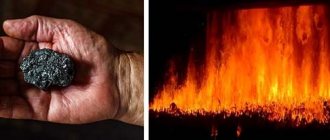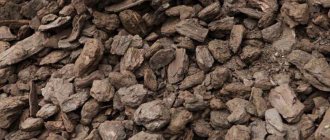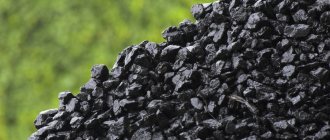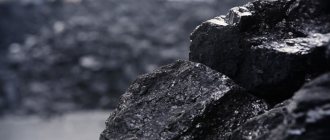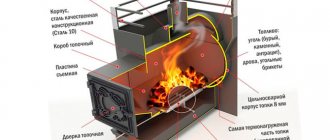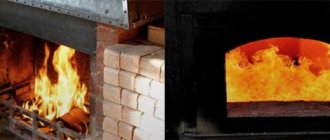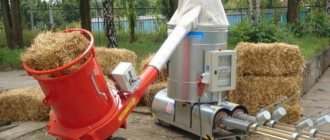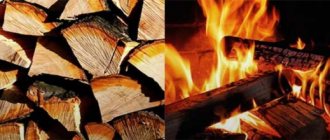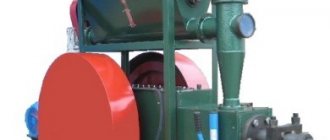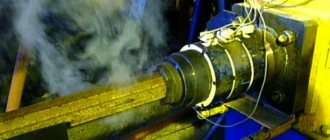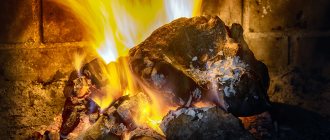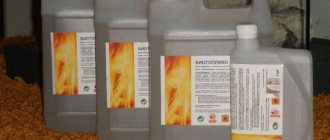Dear friends!
Often, the consumer asks the question: “What is more profitable to heat your home?” You can argue on this topic endlessly, but it is better to turn to the facts, namely laboratory studies:
| Type of fuel | Kcal/kg * |
| oak firewood | 1 930 |
| firewood hornbeam | 1 970 |
| birch firewood | 1 670 |
| sawdust briquettes | 4 300 |
| hard coal (grade D) | 5 800 lowest (min) |
| natural gas | 7 800 |
| fuel oil | 7 100 |
| nuclear fuel | 7.4x10 10 |
Also an important factor is the combustion time of the fuel in the furnace/boiler. We all know that if a stove/boiler is heated with wood, it is necessary to literally “be on duty” at the stove/boiler. Firewood burns out quickly and it is necessary not to miss the moment when the wood in the firebox completely burns out, otherwise the stove/boiler will have to be reheated. With the use of coal, this need disappears. Coal burns evenly and much longer than any firewood. And as you can see in the table above, the heat transfer of coal is many times greater than that of firewood.
Differences
The main differences include:
- Storage conditions . Firewood requires a dry room and is afraid of moisture. Coal can be stored open without fear of loss of quality.
- Burning duration and heat transfer . For coal, these figures are much higher.
- Room pollution . Firewood leaves significantly less dirt.
- Availability . In some regions, coal is not always available.
- Efficiency of different breeds . Almost all types of coal have high heat transfer. Firewood, depending on the breed, manifests itself differently. Some give off heat well, others have a high smoke emission, and others help clean the chimney.
Technology for lighting a coal boiler - how to fire it correctly
Coal boilers are operated using the following technology:
- First of all, dry kindling material - rolled up newspaper or paper - is placed in the firebox. A small layer of wood chips is placed on top, and even higher - small firewood (for example, birch). It is best to lay out the firewood in a hut or in the form of a well so that it burns better.
- The paper placed in the firebox is set on fire. The boiler door closes and the ash pan opens. Using a blower, you can regulate the intensity of combustion - increasing the supply of oxygen directly affects the rate of burning of wood.
- A layer of small coal is placed on top of the completely burnt wood, which has turned into smoldering ash. The thickness of the coal layer is about 15 cm. Each time the door is opened, the ash pan must be completely closed.
- After the first layer of coal burns out, another layer is laid directly on top of it, but a coarse fraction is used for it. The thickness of the main fuel layer should be about 60 cm. Before laying a new batch of fuel, it is better to stir up the previous one a little to increase the intensity of air movement and prevent the coal from sintering into one large piece.
- Low-quality fuel may coke during combustion. To avoid this phenomenon, it is advisable to dilute the main coal layer with small layers of firewood - this will give the boiler the opportunity to warm up normally and ensure maximum heat transfer. The presence of a layer, among other things, will also greatly simplify the process of cleaning the boiler after fuel combustion.
- Proper lighting of the boiler requires that natural circulation is used to burn out the paper and wood chips, which is achieved if the ash pan is open. Due to this effect, the chimney will warm up, and the draft will increase gradually, and at a certain point you will only need to close the ash pan and turn on the fan.
This technology includes a number of fairly simple nuances, and when they are implemented, questions about how best to heat a boiler with coal will not arise. All these subtleties are very easy to remember with the constant use of coal equipment, and it becomes incredibly easy to follow them in the future.
When and what fuel is better?
First of all, the choice depends on the boiler itself and the capabilities of the owner.
Wood is perfect for those who have the strength, time and means to organize its storage. The harvesting process is quite labor-intensive. If you purchase logs, you need to saw them, split them, and put them indoors. It’s easier with ready-made logs, but they will cost much more. But you can be sure that such fuel is available in almost any locality.
Coal, due to its unpretentiousness, is suitable for those who like to save their time . It can be poured onto a separate area, covered with some material, without worrying about its condition. All you have to do is come, take the required amount and load it into the boiler. And the duration of combustion eliminates the need for too frequent monitoring of the heating process.
Each of these fuels is good in its own way. The main thing to remember is the technical capabilities and operating conditions. Then the heated room will always be warm and cozy.
Features of a coal heating system
Usually, those who install solid fuel boilers for themselves immediately begin to understand that they have to constantly work with such a system: this applies both to adding coal for heating and to checking instrument readings. In addition, there are frequent temperature changes due to the fact that the fuel burns unevenly. The combustion chamber and oven need to be cleaned. Now many people use domestic coal-fired boilers with a long burning time - both for heating residential premises and for heating commercial premises.
Preparing for kindling
To ensure that coal heating equipment is safe and efficient, you need to pay attention to the following points:
- If the boiler or stove is rarely used (for example, seasonally), then before use you need to make sure that there are no masonry cracks. Even small cracks in the structure of the furnace provide a wide path for carbon monoxide to escape into the room, where it can seriously harm people present there. To get rid of this problem, all cracks must be covered with a mixture of sand and clay before heating the solid fuel boiler.
- Before lighting the boiler with coal, you need to inspect it visually. There should be no flammable objects near the heating equipment. The internal surfaces of the structure must be cleaned. It is advisable to wipe the firebox with a dry cloth so that the burning dust does not emit an unpleasant odor that will enter the room.
- Coal stoves need to be heated several times a day, and the duration of each kindling should not be more than two hours (for more details: “How to heat a stove with coal and which coal is better”). Dry coal of medium fraction is best suited for heating.
- To ignite coal equipment, you cannot use various flammable wastes and liquids such as kerosene. In addition, the stove must be supervised during the combustion process, especially if there are animals or children in the house.
The described points are not particularly difficult and make it possible to make the operation of boiler equipment safe.
Coal burning
Underground fires can continue for long periods of time (months or years, in some cases up to several thousand years) until the smoldering layer is exhausted.
They can spread over large areas along mine workings and cracks in rock masses. Since they are underground, they are extremely difficult to extinguish, which is not least due to the difficulty or impossibility of access to the source of combustion. Some coal seam fires are natural phenomena. Some coals may spontaneously ignite at temperatures below 100°C (212°F) at certain moisture contents and lump sizes. Wildfires (caused by lightning or otherwise) can ignite coal lying close to the surface, and smoldering can spread through the seams, creating conditions for deeper seams to ignite. Prehistoric cinder outcrops in the American West are the result of prehistoric coal burnings that left a residue that resists erosion better than the matrix. Scientists estimate that Burning Mountain in Australia is the oldest known burning coal deposit - the fire there has been going on for about 6,000 years.
There are thousands of active, unstoppable underground fires around the world, especially in China and India, where poverty, lack of government regulation and uncontrolled development combine to threaten the environment. Modern layer mining opens smoldering layers of coal to the air, restarting combustion.
Among the hundreds of underground fires in the United States, the most famous is in Centralia, Pennsylvania. It started burning in 1962. Today, other underground fires are active in the United States, for example in the city of Vanderbilt, also in Pennsylvania (the state with the largest number of underground fires).
Underground fires can start as a result of an accident, usually causing a gas explosion. Some underground fires started when authorities blew up illegal mines. Many recent mine fires were started by people burning trash in pits near abandoned coal mines (as happened in Centralia, for example).
China's rural residents in coal-producing regions often mine coal for home use, abandoning mines when they are depleted, leaving the highly flammable coal dust in the open air. Mapping China's coal fires from satellite photography has revealed many previously unknown fires. There are several successful examples of fighting underground fires: in 2004, China managed to extinguish a fire in the Liuhuangou coal mine, near Urumqi in the Xinjiang region, which had been burning since 1874. The worst of the current fires are in the Uda coalfields in Inner Mongolia. China's coal fires burn 20-30 million tons of coal per year. The liquidation of underground fires in mines, as well as the rescue of people in Russia, is carried out by the VGChS
Firewood
Wood is an environmentally friendly and most affordable type of fuel . It is used both in private homes and in large city boiler houses. Depending on the latitude and climatic conditions, different types of wood are common in the regions. The most commonly used conifers are pine and spruce. Among deciduous trees, oak and birch perform best.
To use wood in boilers, it is important to know the basic heat transfer indicators of different species, the degree of smoke and soot emission. Both the heating process itself and the maintenance of the boiler and chimney depend on this.
Main breeds and their characteristics:
- Oak _ Due to its density, it is a leader in heat transfer and combustion duration. When burned, it emits little smoke and soot. Disadvantages include inaccessibility in northern latitudes, where coniferous trees predominate. Also, due to the high density, the preparation of such firewood is quite labor-intensive.
- Birch . One of the most popular hardwoods. It has high heat transfer and produces little smoke. A pleasant plus of this tree is the bark, which is very convenient to use for melting.
- Aspen . Unlike previous breeds, it emits significantly less heat. But it produces very little soot. The advantage is that this aspen is often used to clean chimneys. It is best to throw it into the firebox with other, more heat-intensive rocks.
- Pine . Most common in the northern regions. Well-dried logs give off a lot of heat, but burn out very quickly. A significant drawback is the resin content. Due to the resin, the combustion process produces a lot of acrid smoke and soot. You will have to pay a lot of attention to cleaning the chimney and the boiler itself.
- Spruce . It burns out quickly, but emits significantly less smoke than pine. Has low heat transfer rates. Also, spruce cracks violently when burning, scattering sparks. Therefore, when adding logs to the firebox, you need to be careful.
When choosing wood, it is very important to prepare a place for its storage . Wood absorbs moisture well and takes a long time to dry. Therefore, preparation should be done in advance and stored in a well-ventilated area, protected from rain.
